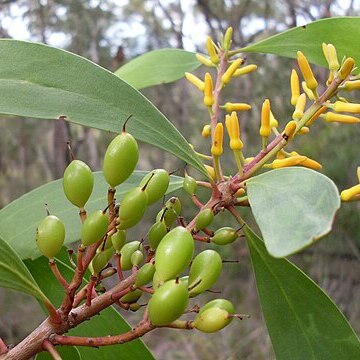An erect or spreading shrub. It can be 5 m high. The bark is flaky showing a red stem beneath. The leaves are thick and bright green. They are oval and 6-18 cm long by 8 cm wide. They are often sickle shaped. They have a rounded tip ending in a small point. The flowers are small and yellow. They are 1 cm across. They are tubular. The occur singly on short stalks 8 mm long. The fruit is a green fleshy fruit with a stone inside. It is about 1 cm long. There is one seed 1 cm long by 1.2 cm wide.


